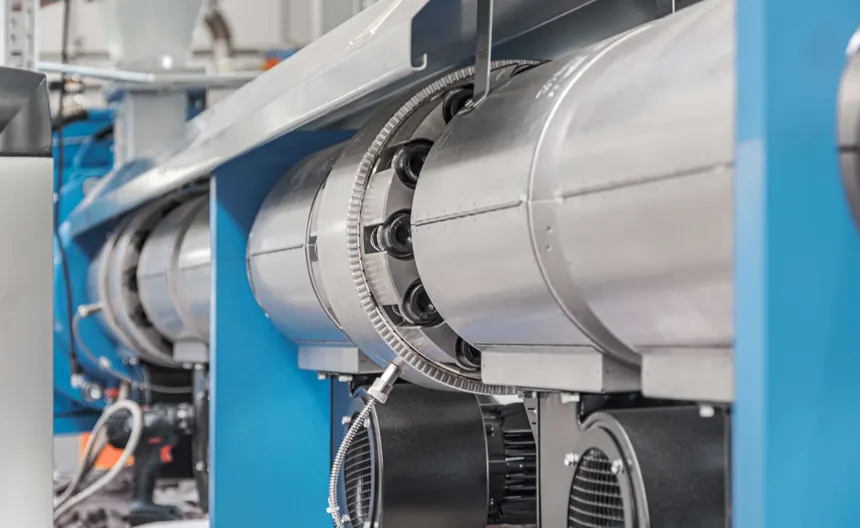Learn how plastic sheet extrusion machine work, their key benefits, and why they are essential for efficient, high-quality plastic production.
Plastic sheet extrusion machines are at the heart of many industries, enabling the production of durable, versatile plastic sheets used in everything from packaging to construction.
But what exactly is a plastic sheet extrusion machine, and how does it work?
In simple terms, this machine transforms raw plastic materials into continuous sheets by heating, melting, and shaping them through a specialized die.
The result? Uniform, high-quality plastic sheets that can be customized for various applications.
Whether it’s for protective packaging, signage, or industrial use, these machines ensure precision, consistency, and efficiency in the manufacturing process.
In this blog, I’ll break down how plastic sheet extrusion machines work, their key components, and the advantages they bring to modern manufacturing.
If you’re curious about how these machines help shape the products we use daily, stick around—it’s a fascinating look into the world of plastic production!
What’s Plastic Sheet Extrusion?
First, let’s know what the word “Extrusion” means.
Extrusion is a procedure where a material is forced through a tool with a specific shape called a die. The die produced constant pieces of a fixed cross-sectional profile.
Now, to plastic extrusion.
Plastic extrusion is also referred to as plasticating extrusion. It’s a continuous high-volume production process where a thermoplastic material is consistently melted and then pushed out of the shaping die through pressure.
In screw extrusion, the pressure comes from the screw rotation against the barrel wall, unlike the plastic extrusion.
As the plastic melt goes through the die, it takes the shape of the die hole and leaves the extruder. The extruded product is called extrudate.
An extruder usually has four separate zones:
- Feed Zone: Here, the flight distance/depth stays constant. Flight distance/depth refers to the distance between the main diameter at the top of the flight and the small diameter underneath the screw flight.
- Transition Zone or Compression Zone: In this zone, the flight distance/depth starts to reduce, making the thermoplastic material compressed and start the plasticization process.
- Mixing Zone: Here, the flight distance/depth becomes stable. A specialized mixing medium may be used to guarantee that the material is completely melted and equally blended.
- Metering Zone: In this particular zone, the flight distance/depth is reduced matched to the mixing zone but stays constant. Also, the pressure in this area forces the melted material through the shaping die.
Plastic Sheet Extrusion Machine
Plastic sheet extrusion machines are used to produce plastic sheets of different widths and thicknesses for many products.
These machines can handle an extensive variety of polymers, including PET, PP, PS, ABS, PE, and others.
With the PMMA GPPS sheet extrusion line, it’s a bit different. It is a manufacturing equipment. It’s specially designed to produce high-quality acrylic (PMMA) and general-purpose polystyrene (GPPS) sheets.
These sheets are generally used in several industries for their optical clarity, durability, and versatility.
However, the plastic sheet extrusion machine works through different stages to transform raw plastic materials into a continuous sheet.
This process, which we’ll see shortly, allows for the production of plastic sheets with various thicknesses and properties suitable for numerous applications, including packaging, automotive parts, and construction materials.
Here’s a breakdown of the process:
- Preparing the Raw Material: The process begins with raw plastic materials, naturally in the form of pellets or granules, being supplied into a hopper. These materials are then transported to the heating chamber, also known as the extruder.
- Heating and Melting: Inside the extruder, the plastic is melted by both heat and pressure. The extruder has a screw that rotates within a heated barrel, melting the plastic pellets and pushing them toward the die.
- Die Shaping: The molten plastic is then forced through a flat die, which determines the final shape of the sheet. The die is designed to realign and guide the flow of the polymer melt from the extruder, usually a single round output, to a thin, flat planar flow.
- Cooling and Hardening: After going through the die, the extruded plastic sheet is cooled using a variety of methods, such as water or air cooling. This step is crucial as it solidifies the plastic and ensures it retains its shape. For sheet extrusion, the sheet typically passes through a set of cooling rolls, which not only cool the sheet but also determine its thickness and surface texture.
- Cutting and Finishing: Once cooled and solidified, the sheet is cut to the desired length and may undergo further processing, such as finishing or adding other components, depending on the application.
Benefits of Plastic Sheet Extrusion Machine

Compared to other materials, the similarities and differences of plastic sheet extrusion machines provide various benefits. Let’s look at them.
- Flexibility: Plastic extrusions can be produced in different shapes and sizes. This makes it easy to customize projects based on specific requirements. They can also be used to make projects in different colors and finishes to improve their appearance.
- Cost-effective: Plastic extrusions are widely not too expensive, unlike other materials, like metal or wood. The processing and labor required to produce them are usually less, so minimal production costs will be spent.
- Lightweight: Plastic extrusions can save you transportation costs and installation time because they are usually not heavy. Their lightweight nature makes them easy to handle, transport, and install.
- Durable: Plastic extrusions are also less prone to damage from impact. This reduces the need to make regular fixes and replacements.
Conclusion
A lot of manufacturers from several industries, like packaging and construction, rely on plastic sheet extrusion machines.
When you have the right plastic extrusion machine, you can easily produce high-quality custom plastic extrusion in various shapes and sizes.
